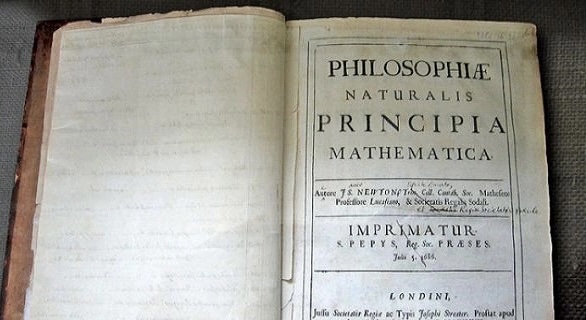
Philosophiæ Naturalis Principia Mathematica (Natural Philosophy with Mathematical Principles) is a trilogy written by Isaac Newton and published on 5 July 1687 in Latin and in 1729 in English.
This three-book text formed a series of books describing physics and mathematics. He also mentioned many of Newton’s laws of motion and his observations on gravity.
Mathematical Principles of Newton’s Physical Philosophy
On this day, July 5, 1687, Isaac Newton’s Mathematical Principles of Physical Philosophy were published in Latin and in 1729 in English. Consists of three books that describe Newtonian physics and mathematics. He mentioned many of his laws of motion as well as his observations on gravity.
In this tightly structured work, Newton partly builds on the theoretical results of Kepler and derives the well-known universal law of gravitation, which underlies mechanics.
Today, the manuscripts of this work, as well as others, can be read on the Internet In the Cambridge University Electronic Library.
There we see handwritten comments, calculations, calculations, and answers to his critics written by himself.
Newton is best known as a physicist whose greatest contribution was to the formation of classical mechanics and the theory of gravity, as set out in his Mathematical Principles of Physical Philosophy, first published in 1687, and now referred to simply as “Newton’s Principles” (Newton’s Principles).
Newton’s views on space, time, and motion not only provided the basis for this monumental work and thus for the whole of classical physics up to the beginning of the twentieth century, but also played a leading role in the overall system of Newtonian philosophy and theology (created largely before the Principia).
Since Newton never composed a treatise, or even a summary of this general system of his, this does not negate his status as one of the greatest seventeenth-century philosophers, in fact, of all time.
In a commentary (Scholium) at the beginning of the Principles, interspersing between “definitions” and “laws of motion,” Newton articulates his views on space, time, space, and motion. He begins by saying that since in ordinary life these quantities were conceived in relation to bodies, it is necessary to distinguish between their relative, definite, and common perception on the one hand, and, on the other hand, absolute and integer mathematical quantities.
As he concluded:
– Absolute, integer, and mathematical time, by its nature, changes in a constant way without relation to any external event, and therefore without reference to any change or method of measuring time (for example, an hour, a day, a month, or a year).
– Absolute, integer, and mathematical space remains the same and unchanged, without any relation to anything external. (The specific meaning will become clearer if its contrast with Descartes’ idea of ”space” is seen.) Relative spaces are measures of absolute space defined with reference to some system of beings or other, so relative space can, and probably will, be in motion.
The position of a body is the place it occupies, and it can be absolute or relative depending on whether the space is absolute or relative.
Absolute motion is the shift from one absolute position to another. Relative motion is the shift from one relative position to another.
From these it is clear that, according to Newton, space is something separate from bodies and that it exists independently of their existence. This position was a major sticking point in seventeenth-century natural philosophy and was attacked by critics such as Leibniz, Huygens, and Berkeley.
Newton and science
Isaac Newton (1643-1727) was a physicist, mathematician, astronomer, philosopher, chemist, and theologian. He is considered the father of classical physics, but his contribution to the founding of modern mathematics, specifically calculus and infinitesimals, was enormous. Based on Galileo’s observations as well as Kepler’s laws of planetary motion, he formulated the three colossal laws of motion and his famous “law of gravity” which, according to legend, was inspired by an apple falling from an apple tree.
His scientific thinking was influenced by Descartes who taught that algebra could support geometry. In particular, Descartes’ view that from the equation of a curve we can obtain any information about the curve prompted Newton to generalize the French philosopher’s piecemeal methods into “analytic” algorithms applicable to any curve.
His scientific work “Philosophiǽ Naturalis PrincipiǽMathematica” (Mathematical Principles of Natural Philosophy) was one of the most important scientific works of his century and defined scientific thought until its revolutionary revision by Albert Einstein with the General Theory of Relativity (1915).
Einstein’s phrase “Newton, forgive me” is still famous. In this tightly structured work, Newton partly builds on the theoretical results of Kepler and derives the well-known universal law of gravitation, which underlies mechanics.

“Avid problem solver. Extreme social media junkie. Beer buff. Coffee guru. Internet geek. Travel ninja.”


-og.jpg?t=y7SX8xaU-xsaLEgDfmnp4A)

More Stories
Xbox wants Fallout 5 to come sooner
Android finally has a solution to annoying notifications!
Activision games are on sale on Steam!